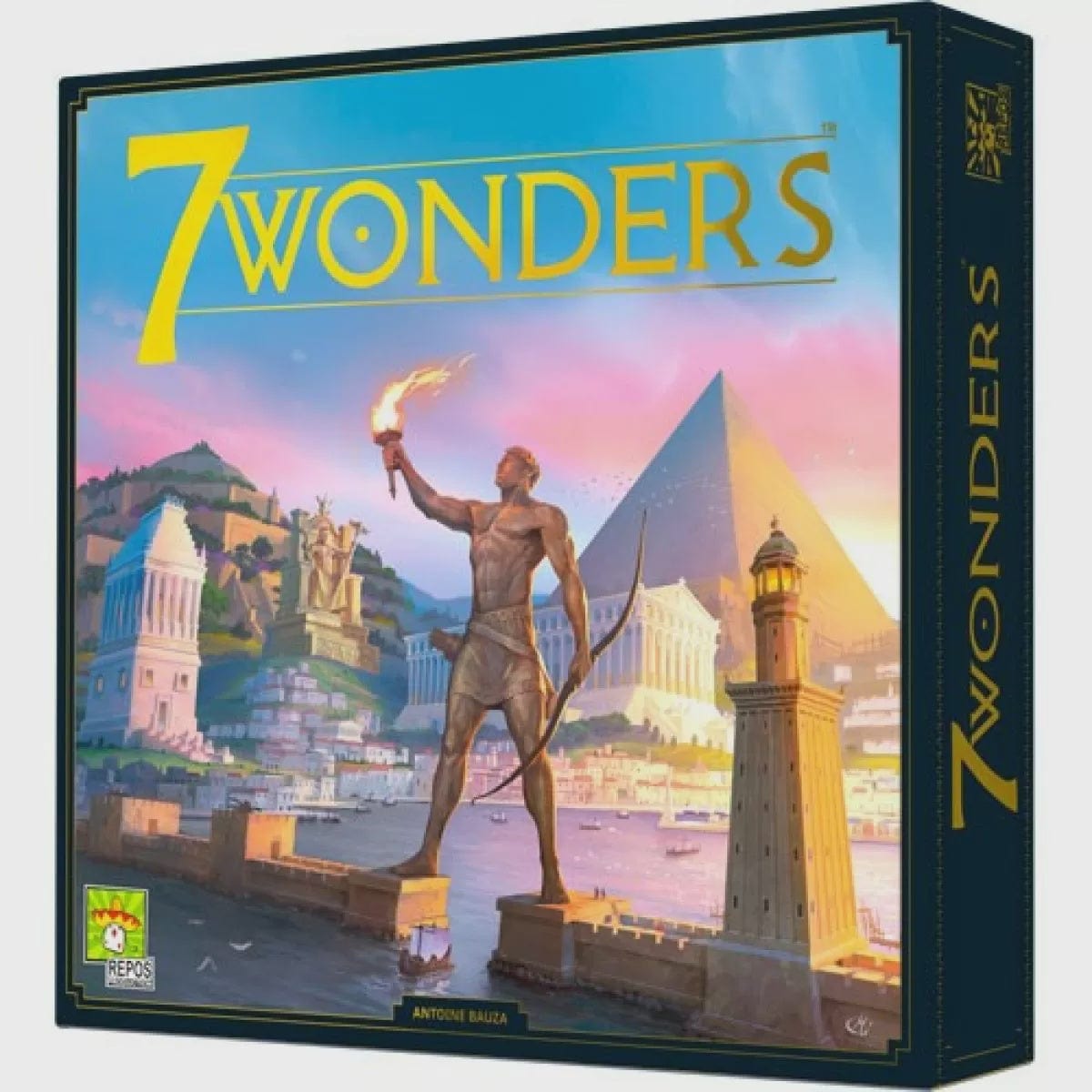7 Wonders New Edition Repos Production
$ 99,99 $ 49,99
7 Wonders lasts three ages. In each age, players receive seven cards from a particular deck, choose one of those cards, then pass the remainder to an adjacent player, as in Fairy Tale or a Magic: the Gathering booster draft. Players reveal their cards simultaneously, paying resources if needed or collecting resources or interacting with other players in various ways. (Players have individual boards with special powers on which to organize their cards, and the boards are double-sided as in Bauza’s Ghost Stories.) Each player then chooses another card from the deck they were passed, and the process repeats until players have six cards in play from that age. After three ages, the game ends.
In essence 7 Wonders is a card development game along the lines of Race for the Galaxy or Dominion. Some cards have immediate effects, while others provide bonuses or upgrades later in the game. Some cards provide discounts on future purchases. Some provide military strength to overpower your neighbors and others give nothing but victory points. Unlike Magic or Fairy Tale, however, each card is played immediately after being drafted, so you’ll know which cards your neighbor is receiving and how his choices might affect what you’ve already built up. Cards are passed left-right-left over the three ages, so you need to keep an eye on the neighbors in both directions.
In 7 Wonders: New Edition, multiple elements of the renowned drafting game for two to seven players are getting spruced up. First, the new edition will come in a larger box with new box artwork and logo. Second, the wonder boards are now larger and instead of having an (A) and (B) side with the same artwork, they now have a day side and a night side. Third, the iconography for the cost of each card has been relocated to improve clarity. Fourth, the iconography for chaining (building without paying the production cost) cards has been revised to improve understanding. Finally, the rules have been rewritten to make learning the game easier. The award-winning gameplay designed by Antoine Bauza, remains the same.
Fast Shipping and Professional Packaging
We have a range of shipping options due to our long-term partnership with UPS FedEx DHL. Our warehouse employees will pack each item according to our strict requirements. Your goods are thoroughly checked and secured properly prior to shipping. We deliver to thousands of customers each day from multiple countries. This shows how we're dedicated to being the largest retailer on the internet. There are distribution centers as well as warehouses located in Europe and in the USA.
It is important to note that orders with more than one item will be processed according to the item.
Before shipping, we will examine thoroughly the items you've ordered. Most orders are delivered within 48 hours. Expected delivery time is between 3 and 7 days.
Returns
The inventory is constantly changing and we do not completely manage it because of the fact that multiple parties are involved, including our warehouse and factory. So the actual stock may alter at any time. Be aware that it's possible for your order to run out of stock even after you have made the order.
Our policy runs for a period of 30 days. If 30 days have passed since you purchased your item, we cannot give you a refund or exchange.
The item must not be used and in the original packaging. The item must be in its original packaging.
Related products
novelty
novelty
novelty
Board game
novelty
novelty
novelty
Board game
magic the gathering





































